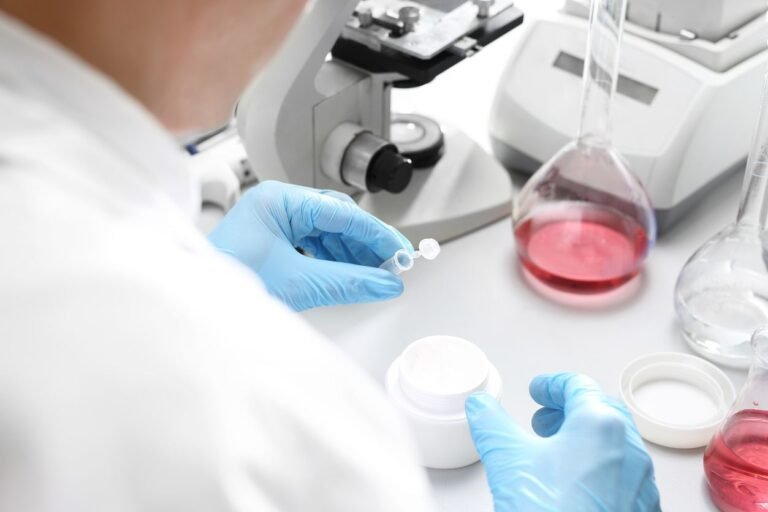In modern formulation science, smart polysaccharides have emerged as key functional materials bridging natural chemistry and intelligent design. Unlike conventional thickening agents, these biopolymers exhibit adaptive behaviors—changing viscosity, adhesion, or hydration depending on environmental conditions. Consequently, they enable clean-label formulations that are both sensorially elegant and scientifically robust.
Defining “Smart” in Polysaccharide Science
A polysaccharide becomes “smart” when its molecular architecture responds to stimuli such as pH, temperature, ionic strength, or hydration gradient. Because these biopolymers contain flexible glycosidic bonds and abundant hydroxyl groups, they form reversible hydrogen-bond networks that reorganize dynamically. Therefore, they adjust rheology and water retention in response to environmental cues—a feature once limited to synthetic polymers.
For example, hyaluronic acid swells under low ionic conditions, increasing film thickness and elasticity. Similarly, alginate crosslinks with calcium ions to form temporary gels that dissolve as the ion gradient shifts. Hence, smart polysaccharides offer on-demand performance without synthetic modifiers or acrylates.
Molecular Design and Functional Classes
Polysaccharides used in cosmetics fall into three main functional classes:
- Film-forming agents – Pullulan, tamarind-seed polysaccharide, and hydroxypropyl starch create breathable molecular films that enhance skin feel.
- Hydrogel matrices – Hyaluronic acid, alginate, and konjac glucomannan form water reservoirs for sustained hydration.
- Bioadhesive modifiers – Chitosan derivatives and β-glucans provide adhesion to the stratum corneum and antioxidant benefits.
Moreover, new marine and microbial sources—such as fucoidan and xanthan-pullulan copolymers—introduce sulfate or acetyl substitutions that enhance electrostatic responsiveness. As a result, formulators can fine-tune viscosity curves and moisture gradients with remarkable precision.
Structure–Function Relationship
The performance of each polysaccharide depends on its monosaccharide composition and chain conformation. For instance, β-(1→3)(1→6) glucans form triple helices that bind to epidermal receptors, triggering skin-defense mechanisms. Meanwhile, linear pullulan chains exhibit high crystallinity, yielding glossy, oxygen-impermeable films useful in color cosmetics.
Additionally, molecular weight distribution determines tactile sensation. Low-MW hyaluronate penetrates intercellular space for internal hydration, whereas high-MW grades remain on the surface, creating a viscoelastic barrier. Therefore, blending multiple fractions produces multi-layered moisturization—a hallmark of next-generation formulations.
Processing and Rheological Engineering
Achieving consistent texture requires controlling polymer hydration kinetics. Initially, polysaccharides disperse poorly in cold water because of hydrogen-bond clustering. However, pre-wetting with glycerin or mild heating to 70 °C breaks intra-chain bonding, enabling complete hydration. Consequently, rheological stability improves, preventing phase separation in emulsions and serums.
Furthermore, rheometry reveals that smart polysaccharides exhibit shear-thinning behavior. This means viscosity decreases during application but recovers rapidly, ensuring spreadability without run-off. In turn, this pseudoplastic nature aligns perfectly with sensorial demands for lightweight yet cushiony texture.
Crosslinking and Hybrid Systems
Smart polysaccharides frequently combine with other natural or synthetic partners to form hybrid networks. For example, pullulan–xanthan mixtures produce self-healing gels, while alginate–pectin blends create ion-responsive matrices for controlled release. Additionally, combining polysaccharides with peptides or amino acids introduces biofunctional synergy through hydrogen bonding and charge pairing.
Hence, crosslinked polysaccharide systems behave as intelligent reservoirs—they retain actives during storage and release them when skin hydration or pH changes. Such precision redefines topical delivery, reducing preservative loads and improving efficacy in natural formulations.
Applications in Skin and Scalp Care
Smart polysaccharides are now central to high-performance skincare, haircare, and dermocosmetic design. Firstly, their film-forming and moisture-binding capacity improves the skin barrier and visual smoothness. Secondly, their ability to modulate rheology creates superior sensorial profiles—lightweight, non-sticky, yet cushiony. Finally, their inherent biocompatibility ensures tolerance even on sensitive or compromised skin.
- Barrier Repair & Hydration: Hyaluronate and tamarind seed polysaccharide act synergistically to restore transepidermal water balance.
- Soothing & Anti-Redness: β-Glucan and fucoidan modulate inflammatory cascades by interacting with toll-like receptors.
- Scalp & Hair Films: Pullulan and chitosan form breathable layers that protect keratin fibers and reduce friction.
- Make-Up Systems: Modified starches provide soft focus, matte control, and transfer resistance.
In haircare, smart polysaccharides replace silicones as natural film formers. IPSTIC® Patch Hair-1 exemplifies this shift by using a polysaccharide-based encapsulation network that delivers hydration and plant actives directly to the scalp. Therefore, biopolymer matrices now define a new standard for clean, high-performance styling and treatment products.
Clean-Label and Regulatory Context
Because these polysaccharides originate from renewable plant or marine sources, they are inherently compliant with EU Microplastics Regulation 2023/2055 and U.S. MoCRA rules. Moreover, their biodegradability eliminates persistence concerns typical of acrylate and silicone polymers. Consequently, chemists can maintain performance while reducing environmental impact—aligning with both regulatory and consumer expectations.
Additionally, smart polysaccharides enable formulation minimalism: fewer stabilizers, reduced preservatives, and simplified INCI declarations. Hence, they embody the “less is more” principle of modern cosmetic development.
Nutraceutical and Edible Crossover
Beyond topical use, many polysaccharides such as pullulan and alginate also serve as edible film matrices in nutraceuticals. For example, dissolvable oral beauty films employ identical hydration kinetics to those used in cosmetic patches. Therefore, the same biopolymer families unify both skincare and ingestible wellness, opening cross-category innovation opportunities for formulators.
Grand Ingredients Case Study – Plant and Marine Polysaccharides
Within the Grand Ingredients portfolio, several systems illustrate the versatility of smart polysaccharides:
- IPSTIC® Patch Skin-2 – a dissolving pullulan–hyaluronate matrix enabling instant hydration and clean removal.
- IPSTIC® Patch Intimate-2 – a hydrogel-polysaccharide hybrid ensuring gentle adhesion and sustained release.
- Marine-derived fucoidan extracts delivering antioxidant and anti-pollution efficacy in serums and creams.
Together, these technologies demonstrate how Grand Ingredients advances the transition from traditional rheology modifiers to biointelligent materials that actively interact with the skin environment.
Key Takeaways for Formulators
- Smart polysaccharides adapt rheology and hydration according to skin environment.
- Blending multiple molecular weights enables multi-layer moisturization.
- Marine and plant sources deliver natural compliance with global regulations.
- Crosslinked systems support controlled release and sensory precision.
- They replace synthetic polymers while enhancing sustainability metrics.
Conclusion
Ultimately, smart polysaccharides mark a scientific turning point: biopolymers are no longer passive thickeners—they are active, responsive components driving cosmetic performance. Because they unite natural origin, adaptive functionality, and regulatory safety, they form the backbone of next-generation clean formulations. Therefore, embracing these materials allows brands to achieve true Innovation Beyond Chemistry.
“Smart biopolymers teach us that nature already engineered the most intelligent delivery systems.”
— Grand Ingredients CEO
References:







